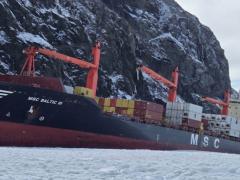Since our article about the SA Reserve Bank (SARB) eventually making it compulsory for all “authorised dealers” to make two crucial reference numbers available for export consignments, FTW has been deluged with complaints from readers who didn’t know about this procedure. The bank now requires the ‘customs client number (CCN)’ – designated to the exporter by customs – and the ‘unique consignment reference (UCR)’ – provided to customs by the exporter – both reference numbers forming part of the single administration document (SAD 500) which is provided to customs at the time of shipment. It has not been compulsory up to now to provide this information except by those selected exporters who participated in the SARB export pilot project. But the bank now requires authorised dealers to make this data capture part of the balance of payment (BOP) reporting process. “The codes seem a reasonable requirement to identify the exporter and export shipment for which the payment has been received by the bank,” said Andre Erasmus, senior manager of Deloitte, the customs and trade specialists. “However it seems to be in contradiction with the ‘exports undertaking’, which is intended to streamline procedures for exporters and the bankers.” In an attempt to clarify this issue for FTW readers, Erasmus researched the whole, complicated affair, and came up with a number of guidelines which help to explain what this provision of the CCN and UCR is all about. “This is a new requirement that appears to be driven by the SA Revenue Service (Sars),” he said. “It is felt that it adversely affects companies that have ‘export undertakings (EU)’ – which absolve the authorised dealer(s) of certain companies from the responsibility of ensuring that such entities’ exports have resulted in the timeous accrual of foreign currency. “In terms of the EU dispensation, this responsibility will rest with the company concerned.” Erasmus then highlighted an extract from the Exchange Control Manual which describes the F178 (export) procedure that is concerned. “The Form F178 is completed by the exporter (in practice often by his shipping agent) for every transaction or consignment except for: • Exports to countries within the CMA; and • Exports, irrespective of the origin of the goods involved, if the value thereof does not exceed R50 000.” The Form F178 contains a description of the goods and their value, and there must be a minimum of three copies – each set bearing a unique number. The forms are taken to the exporter's bank where the original is attested (stamped and signed) and returned with a copy. The bank retains a copy for control purposes. Customs requires the original Form F178 as part of the essential export documentation without which the goods cannot leave the country. Customs subsequently passes the form on to Exchange Control, where the information is stored in a computer. “The use of Form F178 is prescribed where the relevant export from South Africa will result in the accrual of foreign exchange to the exporter and to the country,” Erasmus added. “Where the ‘export’ will not result in a payment from abroad, the owner/exporter must complete the Form NEP (no exchange proceeds). This relates to the taking out of personal possessions, goods exported for repair, etc.” Authorised dealers must scrutinise the export declarations on Forms F178 and NEP to ensure that the transaction value or insurance value of the goods exported is reasonable in relation to current market prices for the commodity concerned. “Where any doubt exists in this respect,” Erasmus told FTW, “supporting documentary evidence of contract notes with regard to insurance cover taken and/ or correspondence should be called for. “When the foreign currency proceeds of the exports are received through the banking system and converted into rand, the receipt of such payment by the SA exporter is reported to the SARB via the ‘cross-border foreign exchange transaction reporting system (CBFETRS)’. All information provided to the control by way of the Form F178 and the CBFETRS is treated with the utmost confidentiality, as is all other information forwarded to exchange control. The control over the foreign exchange proceeds of merchandise exports is monitored by comparing the information on the related Form F178 and the subsequent information received via the CBFETRS. Exchange Control queries any discrepancies through the bank which attested the Form F178. “The Control would, on application,” Erasmus added, “be prepared to consider requests absolving authorised dealer(s) of certain companies from the responsibility of ensuring that such entities’ exports have resulted in the timeous accrual of foreign currency. “Under the EU, the responsibility and administration of the F178 procedures rests with the company. It is completed and submitted to Sars together with the export documentation and kept on file for future reference. “This allows exporter of large volumes to export without having to acquit its documentation for every export through its bankers and facilitates EDI clearances. “We foresee that in time this would become the norm as Sars moves to complete EDI clearances.”












